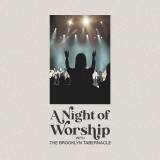A Practical Vocal Development Guide
This guide, along with the specific exercises contained in it, is not intended to take the place of professional voice training. More often than not, improvement is more rapid and steady when a singer has a knowledgeable and skilled vocal instructor helping him or her to develop his or her vocal instrument. However, I do understand that many of my readers are currently between teachers, or choose not to invest in private voice lessons for a variety of reasons, and are actively seeking helpful advice and sound guidance in how to improve in specific areas of vocal performance.
It should also be understood that this article is not an attempt at outlining a complete or systematic approach to voice training. Such a feat would be beyond the scope of this relatively brief article. I have merely made some suggestions that may or may not compliment the singer's current voice study program or fit the singer's current needs.
Readers may contact me or comment for more specific information or advice on how to achieve their vocal improvement goals or to inform me of any detail that might be missing in this overview. As always, please understand that it would be difficult for me to diagnose any technical errors or vocal health issues when I cannot listen to and observe a singer in person. However, I can make 'educated guesses' or assessments based on the information with which I am provided, as well as what I have learned from my years of teaching and research, and then provide information and practice tools.
Be Healthy
First, a singer needs to take good care of the voice and his or her entire body before singing even begins. The singer should eat a nutritionally balanced and healthy diet. Good nutrition and adequate rest boost the immune system, helping a singer to avoid colds and other health problems that will affect his or her voice usage.A singer should also exercise aerobically in order to increase lung capacity and stamina, and avoid cigarette and marijuana smoke, as they dry out and degrade the function of the lungs and vocal folds, which in turn makes breath management during singing less effective and voice quality less than optimal. Having good lung capacity will help especially during performances in which a singer moves around on stage with high energy or dances while singing.
Hydration is very important to helping the voice function at its optimum for lessons, rehearsals and performances. Ideally, the body should remain well hydrated, preferably with water, throughout the day, and the singer should not wait until the practice session before drinking water. During singing tasks, room-temperature water is ideal, as cold water has a slight numbing affect on the throat and makes it more difficult for the vocal instrument to work effectively. Avoid allergens that may cause throat irritation or nasal congestion, and medications that may have a drying effect on the throat.
For more tips on how to care for the voice and how to cope with specific vocal health issues, please read Caring For Your Voice.
Be Safe
Above all, a singer needs to use correct singing technique in order to ensure that the voice is healthy and can be used for many years.There should never be any feeling of discomfort or pain when singing or vocalizing. If a singer feels pain or discomfort, he or she should stop singing immediately. Pain is always a sign of unhealthy singing technique. Do not believe for one moment that the old 'no pain, no gain' adage should also apply to developing the singing voice. Some methods of training will even go so far as to encourage the singer to dismiss certain discomforts and pain while learning a new contemporary vocal effect or technique, assuring them that the discomfort and pain will eventually go away after they've become accustomed to using their voice in a certain (I dare say questionable) manner. If the pain is persistent, the voice should be rested, and a medical throat specialist (ENT or otolaryngologist) should be consulted, as this may be a sign of more serious damage to the vocal folds. Note that, when the voice is begin used properly, there should never be any need for vocal rest and recuperation after singing.
In many cases, singers notice more subtle changes in their voice quality without any pain or discomfort. Hoarseness, unsteadiness, an inability to sing at a softer volume, a voice that cuts out, range limitations, etc. are all signs of potential fatigue, strain or injury, not merely sources of frustration. If the singer experiences any of these changes in voice quality or function, even if they are not accompanied by pain or discomfort, he or she should seek immediate rehabilitative help, as continuing to use the vocal instrument incorrectly could lead to more and more serious vocal problems, including some that may become permanent.
If the singer finds that he or she requires days of rest between rehearsals or performances, this is also a sign that the voice is being worked incorrectly, not necessarily that it is being overworked, (although the latter may also be true). If the pain is present only at certain places in the singer's range, such as in the upper range of the voice, the singer should immediately descend the scale again and re-examine his or her technique in the notes preceding the spot where the pain began to present itself, paying special attention to even the most subtle signs of tension and strain. (Remember that upper range will not be increased when incorrect technique is being used, and it therefore makes no sense to keep pushing the voice higher when it is painful or evidently squeezed. It would be best to sing only within comfortable range until the singer's technique has been corrected.) A knowledgeable vocal technique instructor will be able to assess the problem and provide practical tips and exercises for eliminating it in the future. Learning good technique will help a singer cope with the intense demands of a busy singing schedule so that he or she will be able to continue performing without the need to cancel gigs or concerts.
Go to Page 2 to read more...
A Practical Vocal Development Guide
 Reviewed by Admin
on
10:56:00 AM
Rating:
Reviewed by Admin
on
10:56:00 AM
Rating:
 Reviewed by Admin
on
10:56:00 AM
Rating:
Reviewed by Admin
on
10:56:00 AM
Rating:

















Post a Comment